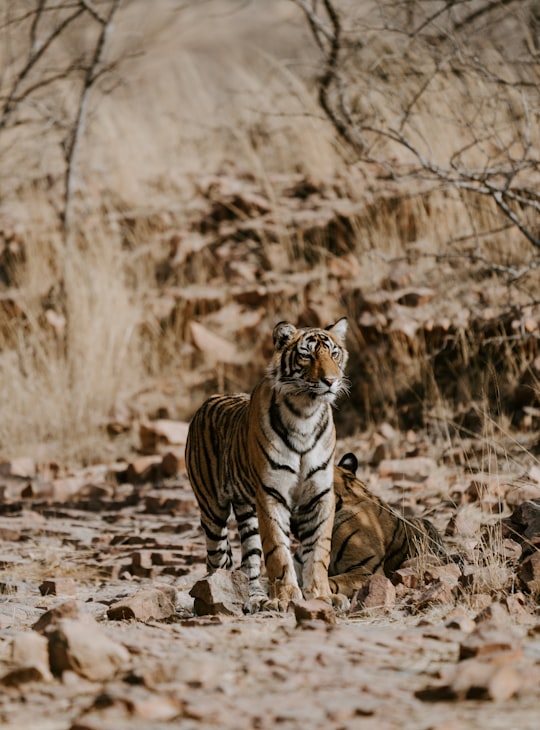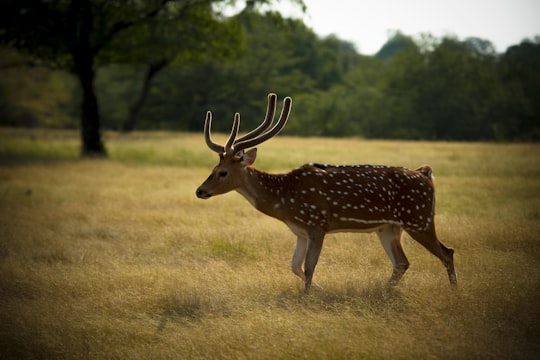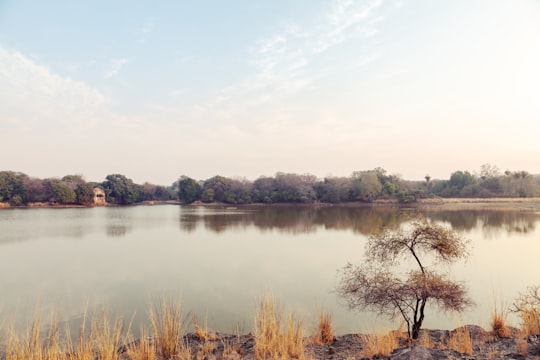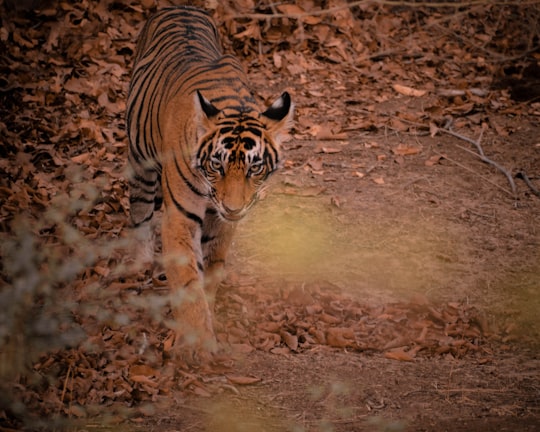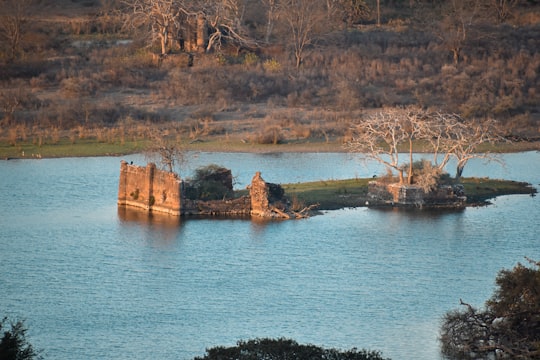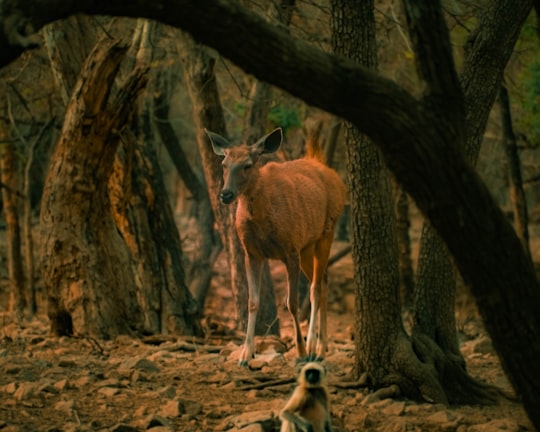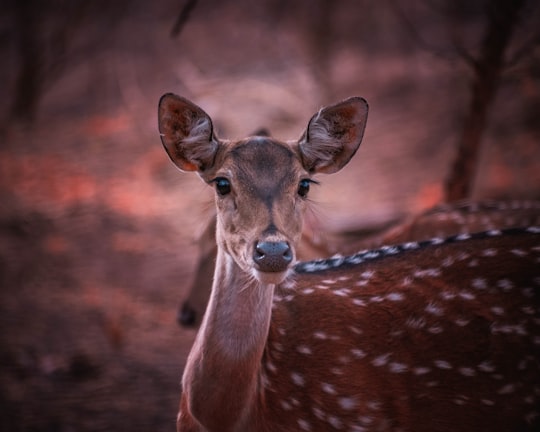Travel Guide of Ranthambore National Park in India by Influencers and Travelers
Ranthambore National Park is a national park in Rajasthan, northern India, with an area of 1,334 km². It is bounded to the north by the Banas River and to the south by the Chambal River.
Pictures and Stories of Ranthambore National Park from Influencers
16 pictures of Ranthambore National Park from Annie Spratt, Praniket Desai, Kartikeya Srivastava and other travelers

- Eyes wide shut - tiger in the wild ...click to read more
- Experienced by @Annie Spratt | ©Unsplash
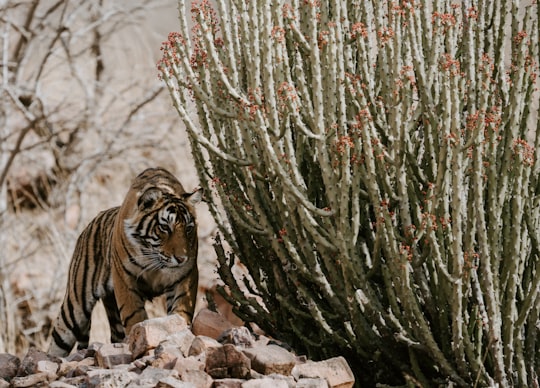
- Tiger in the wild, stalking it’s prey ...click to read more
- Experienced by @Annie Spratt | ©Unsplash
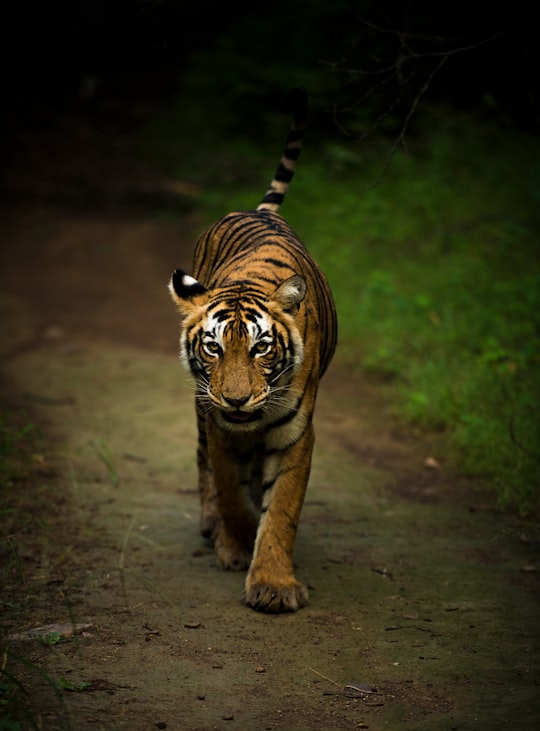
- 'Noor' , one of the Bengal tigers native to the Ranthambore National park in India. ...click to read more
- Experienced by @Praniket Desai | ©Unsplash
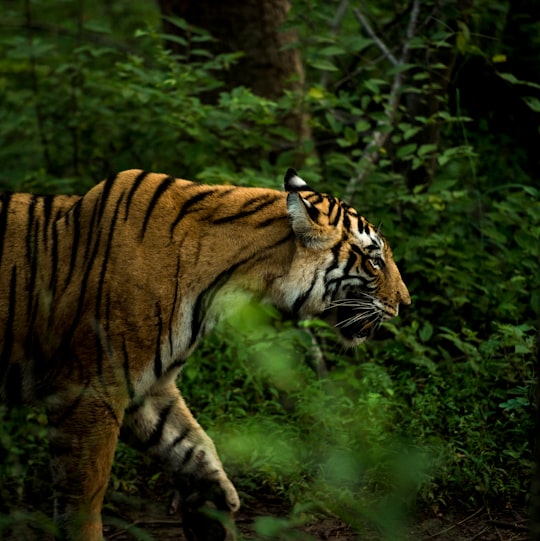
- 'Noor' , A native Bengal tigress of the Ranthambore national park in India. ...click to read more
- Experienced by @Praniket Desai | ©Unsplash
Plan your trip in Ranthambore National Park with AI 🤖 🗺
Roadtrips.ai is a AI powered trip planner that you can use to generate a customized trip itinerary for any destination in India in just one clickJust write your activities preferences, budget and number of days travelling and our artificial intelligence will do the rest for you
👉 Use the AI Trip Planner
How to visit Ranthambore National Park ?
Why traveling there?
Ranthambore National Park, located in the Sawai Madhopur district of Rajasthan, India, is a must-visit destination for wildlife enthusiasts and photographers. The park is known for its diverse flora and fauna, including the majestic Bengal tigers, leopards, sloth bears, and various species of deer. Besides offering thrilling wildlife safaris, Ranthambore is also home to the historic Ranthambore Fort and ancient temples, making it a perfect blend of nature and history.
How to get there?
The nearest airport to Ranthambore National Park is Jaipur International Airport, approximately 160 km away. From the airport, you can take a taxi or a train to Sawai Madhopur, the nearest town to the park. Sawai Madhopur is well-connected to major Indian cities like Delhi, Mumbai, and Jaipur by train, and the railway station is just 11 km from the park entrance.
What to book in advance?
It is highly recommended to book your wildlife safari permits and accommodation in advance, especially during peak tourist season (October to June). There are two types of safaris available at Ranthambore – Canter (open-top 20-seater vehicle) and Jeep (open-top 6-seater vehicle) safaris. Booking can be done through the official website of Rajasthan Forest Department.
What are the costs?
The cost of a safari in Ranthambore National Park varies depending on the type of vehicle and the zone you choose. On average, a Jeep safari costs around INR 1,500 to 2,500 per person, while a Canter safari costs INR 1,000 to 1,500 per person. Accommodation and dining costs vary depending on your choice of hotel and restaurant.
What are the best things to do?
1. Wildlife Safari: Embark on a thrilling wildlife safari to spot Bengal tigers, leopards, and other animals in their natural habitat.
2. Visit Ranthambore Fort: Explore the 10th-century Ranthambore Fort, a UNESCO World Heritage Site, and enjoy panoramic views of the park.
3. Birdwatching: Discover over 300 species of birds, including migratory birds, at the park's numerous water bodies.
4. Explore ancient temples: Discover the ancient Trinetra Ganesh Temple and other sacred sites located within the park.
Where to eat?
1. The Oberoi Vanyavilas: Enjoy a fine dining experience with a wide range of Indian and international cuisines.
2. Manisha Restaurant: Savor authentic Rajasthani dishes in a traditional setting.
3. Food Corner: A budget-friendly option offering delicious Indian and Chinese dishes.
Where to stay?
1. The Oberoi Vanyavilas: A luxury resort with lavish tents, spa facilities, and exceptional dining options.
2. Ranthambore Kothi: A boutique hotel offering comfortable rooms, a swimming pool, and a beautiful garden.
3. Tiger Moon Resort: A budget-friendly option with comfortable cottages and a serene ambience.
Off the beaten path
For an unusual travel experience, explore the lesser-known Kachida Valley, located on the outskirts of Ranthambore National Park. This picturesque valley is home to a variety of wildlife, including panthers and sloth bears. You can enjoy a peaceful and less crowded safari experience as you venture into this unexplored part of the park.
Book your Travel Experience at Ranthambore National Park
Discover the best tours and activities around Ranthambore National Park, India and book your travel experience today with our booking partners
Map of Ranthambore National Park
View Ranthambore National Park on a map
More Travel spots to explore around Ranthambore National Park
Click on the pictures to learn more about the places and to get directions
Discover more travel spots to explore around Ranthambore National Park
🐾 Wildlife spots 🏞️ Reservoir spots 🌴 Jungle spotsLearn More about Ranthambore National Park
Ranthambore National Park is located in the Rajasthan region of India, 15Km from the town of Sawai Madhopur. It was once the private hunting reserve of the maharajas of Jaipur. However, in 1970, the government realized that the tigers were in danger of extinction. Hunting was then banned and a few years later, the first "Project Tiger" park was created. The park covers an area of about 400 km² and is divided into 10 zones. The vegetation is semi-desert and consists mainly of Banyan and Dhok trees. It also has three lakes: Raj Bagh, Padam Talab and Milak Talab, which allow animals to drink. Besides the observation of these magnificent landscapes, the safari remains the central activity of the park of Ranthambore. A multitude of wild animals are listed there, tigers of course, but also bears, crocodiles, axis deer, antelopes, various species of monkeys and not less than 250 species of birds. Access to Ranthambore Park is relatively easy, with the airport of Jaipur located at 165Km, to which it will be necessary to add 3 hours of road. The park is open from October to June, but the best period is December, April or March. It can be visited by jeep or canters with the help of local guides who will lead you along the marked trails. For accommodation, a large number of hotels allow you to stay in the vicinity or inside the park. Finally, during your visit, do not miss to go and observe the Ranthambore Fort located in the heart of the park. It was built in the 17th century in honor of King Hammiradeva and became a UNESCO World Heritage Site in 2013. The building offers a superb view of the park and its lakes, and also allows the observation of storks, eagles, and many other birds.
Where to Stay near Ranthambore National Park
Discover the best hotels around Ranthambore National Park, India and book your stay today with our booking partner booking.com
Popular destinations near Ranthambore National Park
Disover the best Instagram Spots around Ranthambore National Park here

